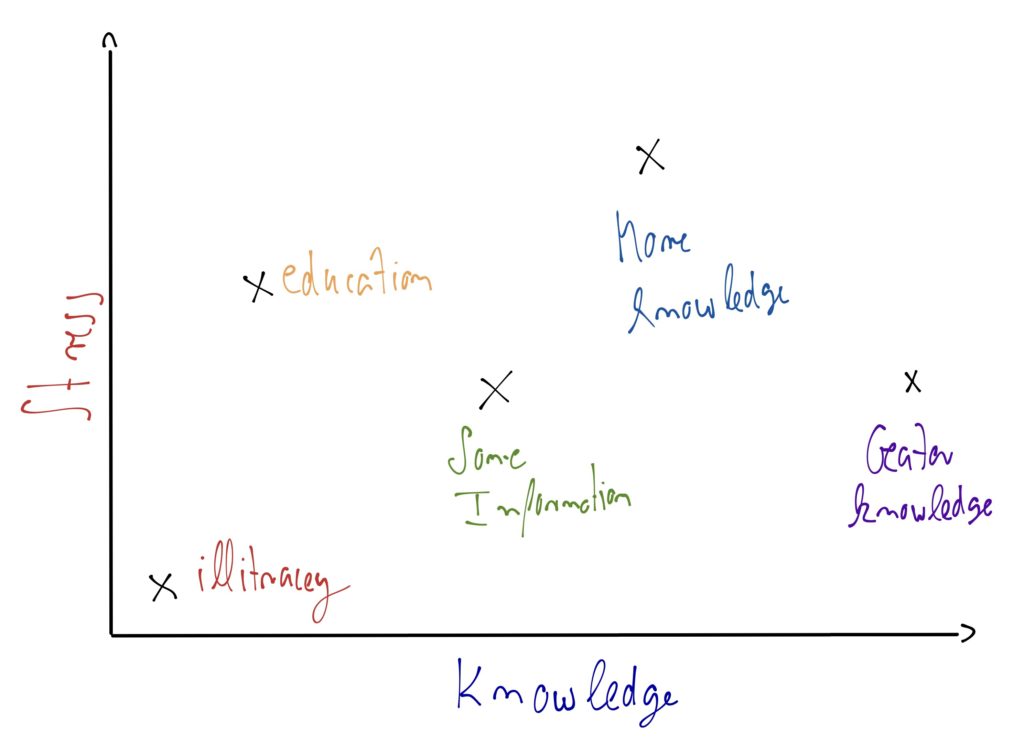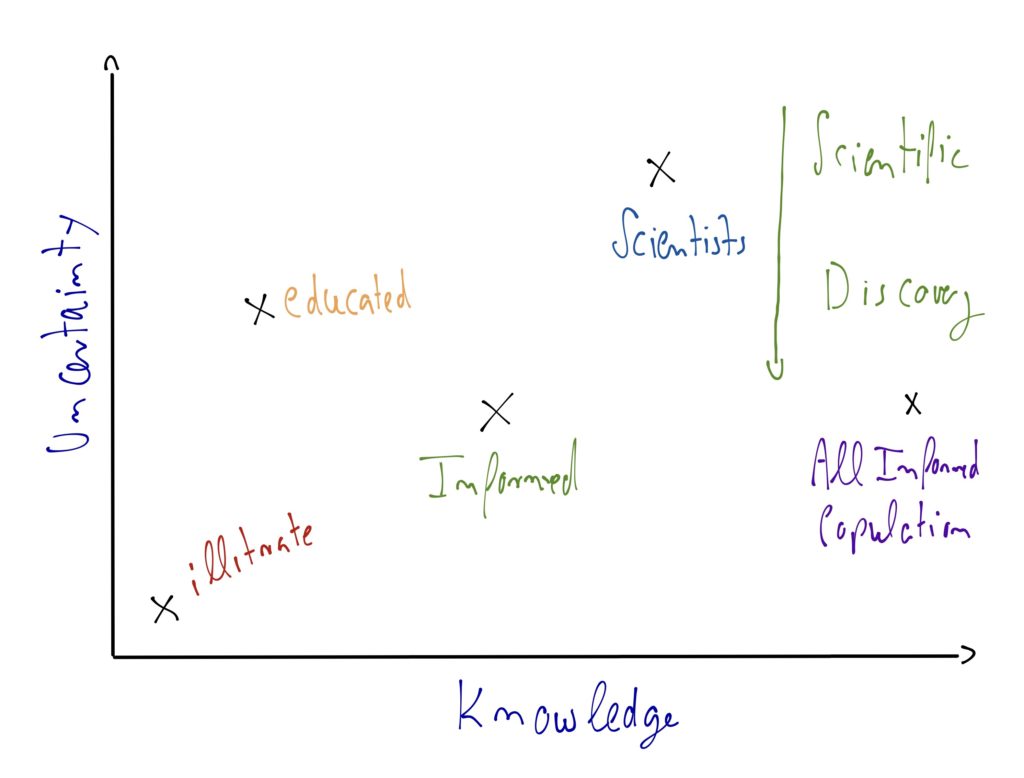How knowledge affect your uncertainty and stress – a proposed graphic model
Yes, I am stressed, and yes, I am worried. That was my answer when my wife woke me up in the morning, passing the tea and asking me if I should take a medication to calm down.
I am not worried about what happens; I am concerned if we, as a country, as a family or at work, are making the right decisions. I am not worried about the choice; I am concerned about the decision-making process. She looked at me and said, “ha, what are you talking about?”
I told her I am a doctor; I am responsible for guiding my fellows in addition to my social responsibility too. I am working at the front lines at the outpatients’ clinics and hospitals. Every day I am coming home with the risk of carrying contamination. Not only that, but I also am responsible for taking care of you and the kids, and I am responsible for my greater family.
So, again I am not worried about whatever happens if I make the right decision. I am conscientious about making sure that we are following the proper decision-making process. And that goes for every level, country, work, and family.
After our conversation, I started to think again about the relationship between stress and my job? Should or are doctors worried or stressed more of the pandemic?
I started exploring the idea of the relation between knowledge, stress, and uncertainty.
I came up with two graph models that depict such relation
The first graph is displaying the association between stress and knowledge.

Four phases depict the link between stress and knowledge.
In the complete illiteracy phase, people here have zero stress; they don’t care about anything.
The educated phase, people, know some knowledge that they hear from here and there. But mostly they get the knowledge from untrusted sources, social media, and fake news. People from phase one can join this phase if they have the same sources of information, such as untrusted TV channels or media manipulated by a corrupted regime.
Then the information phase, where people start to get reliable information from the reliable medical resource. They begin to calm down and understand what is happening. Some doctors are in this group.
Then comes the more knowledge phase, here where most doctors are. They have more knowledge of the subject and are working at the front lines. Scientists who study the disease are at this phase; they see the pandemic spread firsthand.
Finally, there is a greater knowledge phase, when scientists discover treatment and/or vaccine for the disease. At this phase, we have a predictive model for the disease spread. However, it’s usually a retrospective reveal.
The other graph depicts the association between uncertainty and knowledge. It follows the same pattern and phases as the previous graphic model.

The fourth phase is where all people stand at the same level of low uncertainty.
In light of the demonstrated models, stress, and uncertainty of the majority of the population will be at the optimal level if we spread medical and scientific information.